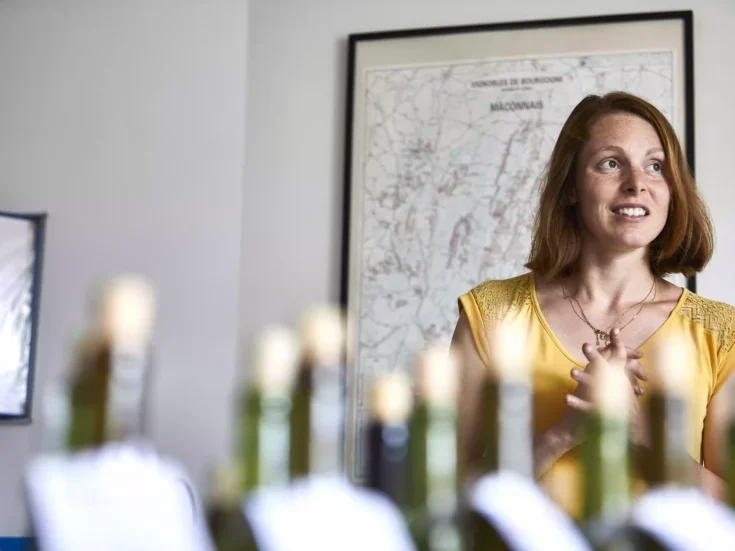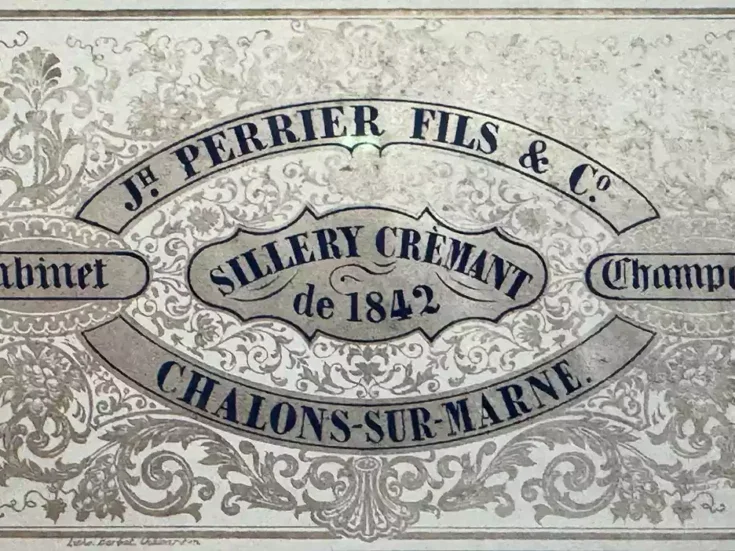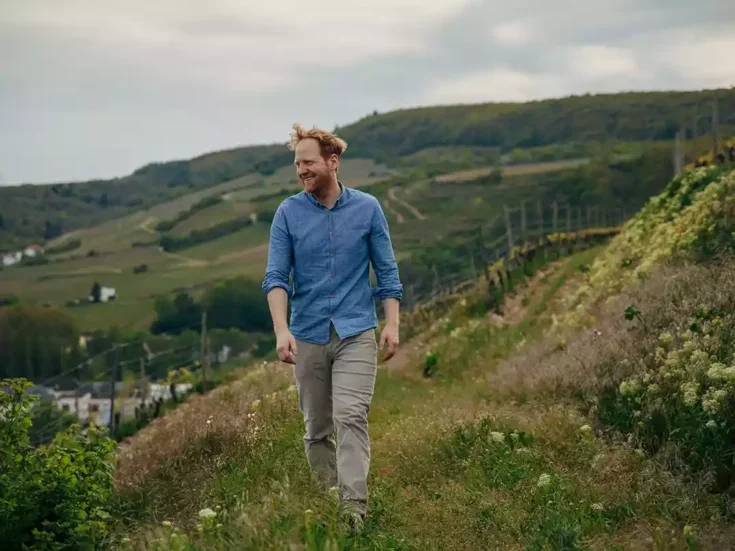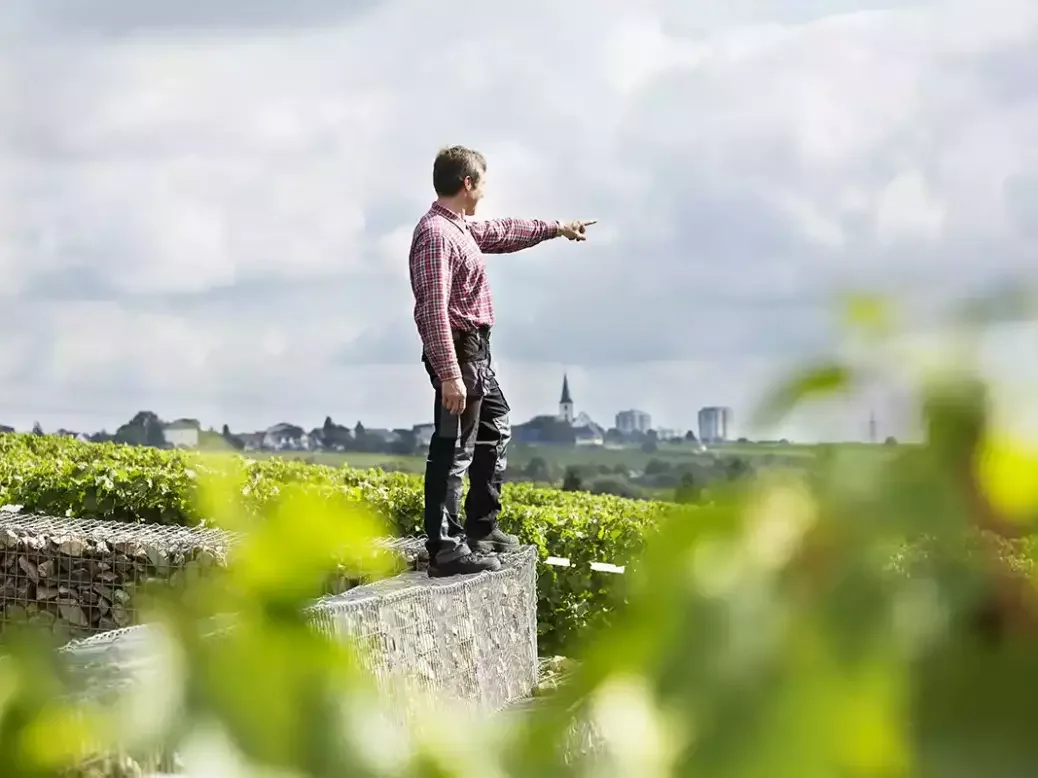
Terry Theise dips into the vast range of Weingut Künstler in Hochheim, and comes away impressed anew by Gunter Künstler’s ability to express the many different terroirs of the Rheingau region.
Everyone should have interesting friends. Of course we love our friends, and to us our friends are always interesting. But I refer to a specific sort of friend, the one with whom you make such vibrant conversation that many days later the ideas are still crashing around in your head. It’s My Dinner With André in real life. If we have even one single friend like that, we are blessed and fortunate.
I’ve spent much of the last week tasting through a case of wine Gunter Künstler was kind enough to send me, so that I could stay reasonably current with his work. Of course, his is an expansive winery, and I couldn’t taste everything—I couldn’t really even taste much. (I missed most of his reds, many of his Rieslings, along with his Chardonnays, Grüner Veltliner, sparkling wines, and sundry others.)
But what I did taste were wines I not only liked, admired, and enjoyed; they were wines that echoed and pealed, so that I didn’t want to stop thinking about them—couldn’t stop, actually. A Künstler Riesling is the paradigm of an interesting friend.
Having added land several years ago, Künstler’s Rieslings are a cross section of possibility for the Rheingau. From the mineral-soaked earthiness of Hochheim (and its near-neighbors) to the swollen richness of the central Rheingau (Erbach, Hattenheim) to the lacy clarity of the Rüdesheimer Berg Schlossberg with its slate and quartzite soils, this estate pivots so gracefully among those terroirs that you can’t really pin it down. Nor need you.
If there’s a through line running among these variations of type, it isn’t easily described but it’s easily discernible in aromas and textures. Künstler’s wines are modern, ie, clean and clear, usually a little spritzy, very much on the dry side of dry—but what they are not is aggressively acidic, overtly “perfumey,” or marked by any sense of having been “formed” or engineered. Their elegance seems to derive from a kind of candor, that the sites should speak clearly, and that is how you know whose wines they are.
Among the whites, the “1er crus” were from the 2022 vintage while the elite “GG” series were ‘21s. Many commentators have lauded 2021 to the skies. And many of the wines are exciting, and a few of them are great. Yet the vintage has an extreme enough personality that I have a rather more nuanced view than others I have read.
2022 Künstler Spätburgunder “Tradition” Trocken
A mélange of sites in Hochheim, this seems to be the estate-level wine. Aromas are sweet and roasty, and the palate is glossy and balanced. I was highly curious how these would be, after tasting all the reds from Baum-Barth (a new estate in Ingelheim) last week. In contrast these present less seamlessly; you can taste the fit-and-finish here, and the surface texture is less matte than the Ingelheimers. There’s also the innate earthiness of Hochheim to consider.
I’ve always liked this wine, and it remains appealing. Its exterior is perhaps more buffed and polished; it feels shaped and formed, and nothing wrong with that. The Baum-Barth wines had an ease of being, as though nothing could shape them because they were already ideal. Here, we have a wine that’s bright and spicy and eager to express itself. I like and admire it, and I also miss the tender umami depths of last week’s wines, which I appear to have been quite spoiled by.
Four days have passed and the nearly-full bottle stood undisturbed in my (now) 51º cellar. I’ve brought it up to room temp and was curious—would it seem less plausible and better knitted than the first time? The answer is, mostly yes. I also observe that it is grumpy to complain about a wine that seems tangibly shaped-and-formed. We respect those things. And I like the deliberate finish, with its earth-depth and tomato leaf edge. It’s like clove and duck breast in fluid form.
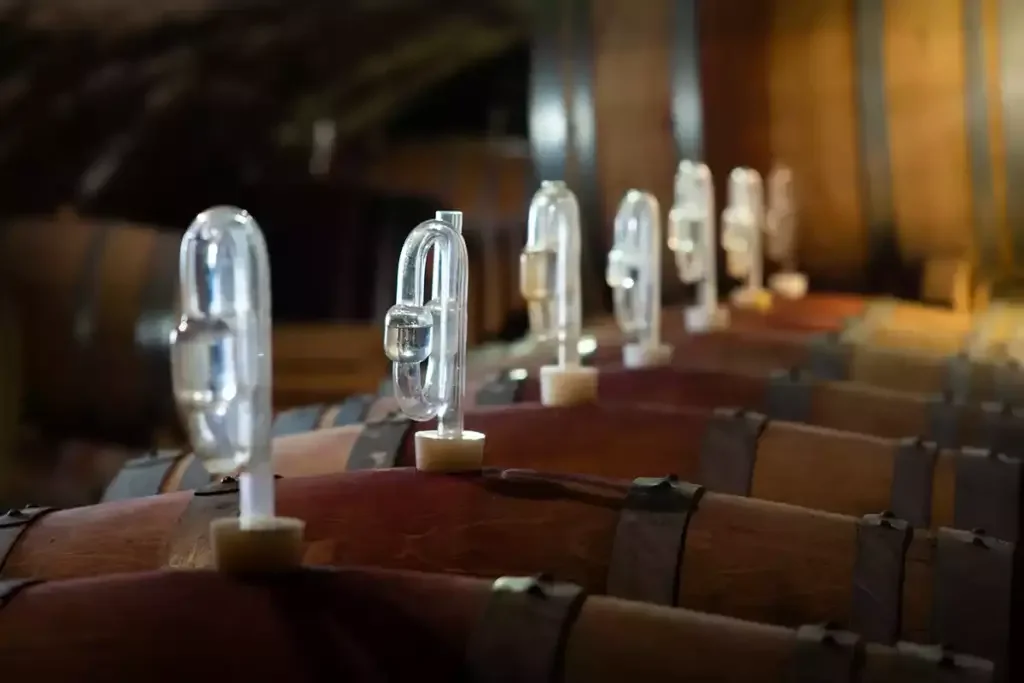
2019 Künstler Assmannshausen Höllenberg GG ++
Spätburgunder only appears on the back label. The steep slatey vineyard downstream from Rüdesheim, after the river has turned to the northwest, has been famous for its reds for many years, though that fame is only recently justified—by wines like this.
A delicate, marrowy fragrance pulls you in. The wine is in a way “modern” in its clarity and brilliance of texture, but the depth and sweetness of fruit are encompassing and convincing. It is spiffy, yes, but it’s also gorgeous. It has a civilized wildness on the mid-palate; rose hips, tomato water, and curiously those Bisquit de Reims cookies you get everywhere in Champagne. I’m going to venture further afield than most readers will be able to follow, but there’s a quality of fruit here that immediately reminded me of Theresa Breuer’s Rieslings from the Rauenthaler Nonnenberg, as though they were fraternal twins who could read each others’ minds.
It also reminds me of the sweet side of Gevrey, the one we often forget is there, typified by Charmes-Chambertin. I do not exaggerate when saying it has the force and imprint of a grand cru, though its fruit is so exquisite it’s almost dainty. But vintage ’19 shows its sun-soaked-wheat generosity and its herbal-doughy mid palate, and the wine is anything but evanescent. And saying that, we have to account for a quality of fruit that seems to hover, as though it were vaporized and was floating just above the glass. People sometimes talk of the ethereal force of great Burgundy, and I see it here.
Finally, the wine clings on the finish as though it would perish if it ever disappeared. The wine is masterly, and tenderly splendid. If the phrase “buoyantly deep” isn’t too great an oxymoron, this wine shows the paradox that always heralds greatness, and greatness is well within its reach. Chapeau, Mr. Künstler; you have unearthed a gem.
Upon re-tasting I ventured outside into the howling gale of a rare April nor’easter, and the wine revealed its finesse of diction and its articulation of nuance. It showed its oak, too, but nothing more overt than an especially deft Crianza Rioja.
2022 Künstler Hochheimer Stielweg Riesling Alte Reben +
An elegantly mineral bouquet also offers fir and iron in an introverted, even broody form.
No brooding on the palate! The wine enters with a 21-gun salute, loaded with physiological “sweetness” and with redcurranty herbs and a mixture of spices that made me think of galangal. Combined with the gob-stuffing earthiness of Hochheim, we have quite some dry Riesling juju going on.
I mean, it’s hardy a secret that Künstler shares the summit with few if any other Rheingau growers, but really this wine is crazy-good and entirely euphoric. Along with all the spice and earth and mineral complexity there’s just a borealis shimmer that rides incandescently along the palate, a pure serene dryness that has nothing remotely strict about it, so that it takes colossal will power to even spit it.
(And may I remind you that we’re not yet even at the GG level?)
These wines have never had the acclaim they deserve in the American market. Whatever “reasons” there may be for it, they have zero to do with the wines, which are unfathomably good, consistently so, and presented with a more modest grace than is sometimes the case among the grands seigneurs of the Rheingau.
It also keeps getting better. On my third sampling it’s all nettles and gorse and a newly persistent citricity of tangerine.
Okay, here is pure wildness, act-1: it would be stunning to taste this next to the Steinsetz Grüner Veltliner from Gobelsburg, going back several vintages, because both wines have a radish stiffness yet also a lavish juiciness, and flavors seem to zoom upward like a high-speed elevator in a tall office tower. The wine isn’t the least bit elegant, but it’s a thrill to drink.
(Pure wildness acts 2 and 3 will arrive soon, as these wines kept insisting on identifying their cognates in Austria.)
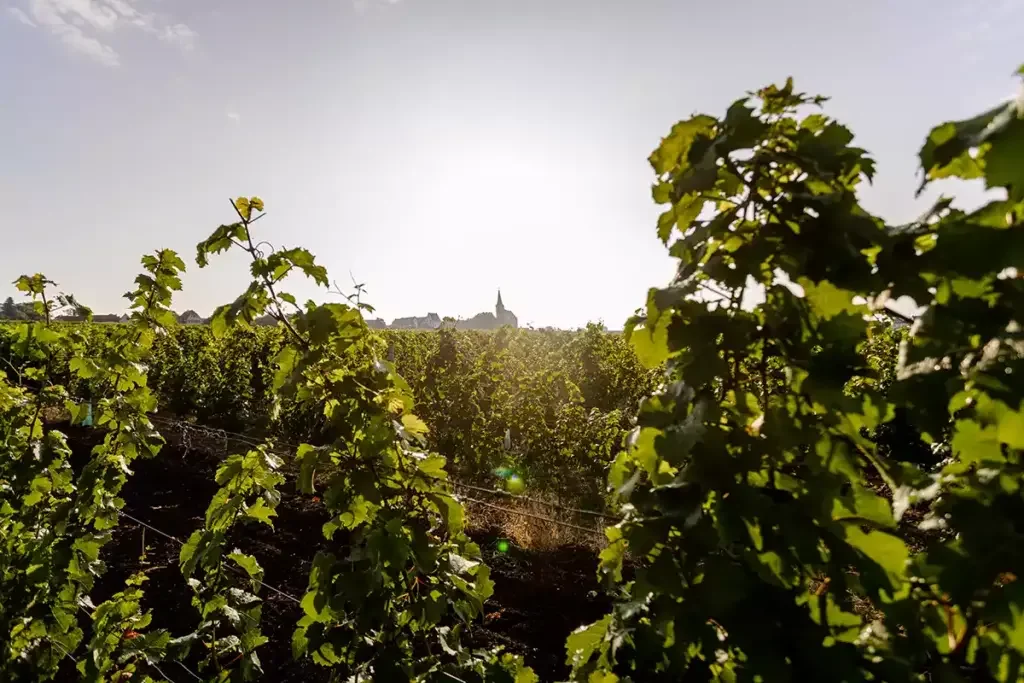
2022 Künstler Hochheimer Kirchenstück Im Stein ++
Riesling appears only on the back label.
This loam-dominant vineyard is one of the two best in Hochheim. Gunter Künstler would admonish me that there are three, the third being Hölle, but I see that one as a satellite grand cru and not quite among the very best.
Compared to the Stielweg it is more angular and corrugated—and it has a half percent less alc—but the craggy chiseled complexity here is simply categorical, albeit the wine is less ethereal than its big brother the GG—which is on the tasting table as I write. You could call this wine “chewy” and you could call it peppery if you knew the floral nature of the Tasmanian variety. It’s like a rock wall with plenty of hand-holds for climbers. It also has the “sweetness” of cardamom. But lining up its (many) flavors is maybe ineffectual, because the meta-truth of this wine is someplace else.
It is deep, deep in the zone-of-confusion for Riesling, the place where people think the variety is “fruity” or god help us, “sweet.” A wine such as this one is at the apex of the varietal essence, the basic truth of these wines. When grown in the land that suits them best, they are essentially rocky; everything else plays atop that rough and forbidding complexity. And the genius of this greatest of all grapes is how amazingly good they taste, built on such a solid frame.
There are ways in which this isn’t quite as impressive as the Stielweg. It doesn’t have quite the length. It doesn’t have the yin-yang of minerality and iridescent shimmer. What it has, though, is the thing you can never reduce, can never go deeper-than, because this is as deep as it goes. It is the taste of this vineyard’s terroir. Is it relatively ungainly, shambling? I think that it is. But the essential thing by which it is endowed is an inscrutable, indifferent depth. Like it or not; it doesn’t care. It just gnarls away with its is-ness, and if you don’t come to the party, the party happens without you.
It gains in delicacy over the days; the party’s winding down and the few remaining people are having one of those searching late-night conversations all of them will remember happily, and for a long time.
2022 Künstler Hochheimer Domdechaney Riesling Trocken ++
This is the most unreadable of the Rheingau grands crus. That may be why I love it so much. It behaves as if it were banished from Deidesheim. It feels oblique to the other Rheingau crus. (That wasn’t always the case, but in simpler times they knew what was what better than we do now.)
In many ways you can see it here. This wine is silkier than the Kirchenstück. The minerality is more pixilated; the wine is saltier. A hyssop and carraway element is gaudier. What piddling few grams of RS seem more visible, though this could be a palate error. A curious overtone of melon arrives. There’s a spearminty finish. Seriously, it’s a stupid-complex wine.
There’s something of the grainy legume-y complexity of the Schoenenbourg grand cru in Alsace, along with the miso and meyer lemon thing of the Pfalz. If “Rheingau” entails a sort of stately elegance, a perfectly fitted suit completed by the perfect ascot, well forget that shit. This wine’s profundity is like a smooth rockslide of salt and scree. The doughy underpinnings are reminiscent of the Wachau’s Achleitenthough in a considerably sleeker form.
How does dry Riesling improve on this? Damned if I know. Let’s keep tasting.
Second tasting—it’s more assertively spicy, and even brash from the Jancis glass. It remains a master class in terroir. It trades personalities with the Kirchenstück, growing more clamorous while its neighbor grows more refined.
2021 Künstler Hochheim Kirchenstück GG ++
Riesling appears on the back label. That label is affixed to a stupid heavy bottle all the more egregious coming from a “Fair ‘n Green” member estate. All the GGs are in this dreadful bottle. THIS NEEDS TO STOP.
Bearing in mind we have a different vintage now, we also have the ethereal overtones one hopes to see from the GG class, unless the site is such as to preclude such things. But not here; the way this wine smells is—divine.
The sublime is irreducible to the components that added up to it. I can cite those components here, most of them at least. There’s the “floating” nature of wine that received perfect and sensitive cask aging, and the umami that results from it. There’s a subtle honey, like fresh cut acacia. There’s the brisk smelling-salts sting of ’21, hissing beautifully at all the sweetness. There’s a surprising coda of length in which the very guts of the cru are there to be tasted. There’s a finish both searching and tangibly minty. You can line them all up and see what sum there may be.
Only there isn’t one. There’s a totality that has nothing to do with the things you thought would produce it. A grand cru is like music or poetry; it is inhabited by a spirit—you could even call it a ghost—that says when it is present even if you don’t think you speak its language. There’s always a moment—you know it immediately.
This is a wine full of wonders and with many facets of greatness, and I am blown away by it. And being “blown away” I also find myself wondering whether the wine is too emphatic. That sushi-knife cut—what Karen MacNeil calls the “stiletto” effect—gets in the path of the chime, and for me a great wine wants you to listen to the bells.
I can easily imagine other tasters hearing such thoughts and thinking “That man is fucking crazy.” Maybe I fucking am. I haven’t joined the chorus of uniform praise for 2021, because while its best wines are exciting as fireworks, its not-best wines can be shrill and some of its best wines can be, let’s say, obviously and blatantly grandiose. This wine isn’t one of them, I hasten to add, and while I can easily recognize each way this wine is wonderful—and it is—it is more of an explanation and less of an incantation. But seriously, what nonsense is this? How can a sensible man have a single caveat about a wine this beautiful? I shouldn’t … I don’t, really. But the smell of the empty glass is the first time I feel the impulse to let go, to surrender. That aroma is otherworldly.
I feel the same with subsequent tasting. This is sensational wine by any standards, even my crypto-mystic ones. It’s probably inane of me to look for some para-sensual shimmer as the marker of greatness. Yet I do. On the other hand, wear strong tight socks when you drink this, because it will set about to knock them off.
2021 Künstler Kostheim Weiss Erd GG ++
The back label shows Riesling, and also spells “Weiss Erd” Weiß Erd, as if the GG-font had no way to write “ß”
Perhaps the most improbable GG in the Rheingau, an exceptionally warm microclimate along with limestony marl, I have thought this to be among the “lesser” GGs—but wow, this wine smells like a million bucks, like some astonishing hybrid of Champagne and Nahe Riesling. The Jancis glass reveals elements of hyssop and fennel, and once this hits the palate—look out.
Now we’ve added white tea and white pepper to the mix. The wine blasts away in every possible key; it’s ridiculously lively let also has the brightest umami; it has stinging precision yet also a sort of taut lusciousness; it has a twitchy energy but also a sort of iridescent serenity. When I opened the sample case I was at first disappointed he didn’t send the Pfaffenberg GG, but I am crazy glad he sent this! I can’t imagine a better wine was ever made from this cru. It’s like the angel of a very frisky puppy.
When the ‘21s justify their reputations they taste like this. It’s a high-wire act; they can be too brash, too crudely “intense” and too acid-driven, but just when I start wondering what the fuss is about, a wine like this comes along, and demonstrates The. Fuss.
Either there are a measly few grams of RS or else the physio-sweetness is unduly expressive. What (little) the wine might give away in elegance, it compensates with sheer vividness and a psychedelically visible intricacy. I could imagine it as a wine Hans-Günter Schwarz made in his heyday.
That’s a lot of words for a wine whose ideal “tasting note” probably should be—“Fucking hell, am I tripping?”
I have a little daydream of Gunter and his cellarmaster going through the cellar tasting these wines just after fermentation, looking at each other slack-jawed, each of them thinking Good lord, what have we got here?
2021 Künstler Rüdesheim Berg Rottland GG ++
Again Riesling on the back label, and again (like all the GGs) a lamentably heavy bottle.
Rottland can brood, and after the fireworks of the Weiß Erd this wine arrives as an introvert. Experience tells me this will be deceptive, because Rottland is often soconcentrated it seems to implode. What it reminds me of—and this would be a wicked side-by-side tasting, is the Ried Lamm Grüner Veltliners, which have a similarly implosive translucence. I wouldn’t fuss at you if you held up Ried Achleitenas a more apt comparison.
The question is, what will the big broody beast make of the ’21 vintage? Rottland is so often a magma of Riesling, will it know what to do with the ’21 brilliance? At first the wine feels swollen, as is typical. It has some jalapeño heat (but just 13% alc) and a certain amount of analog mist, not opaque, but burying its flavors deep within its chest. As it aerates it grows saltier, like those black lava salts, and it also has aspects of a dried morel powder I have in my pantry. (FarWestFungi is the excellent source, if you’re curious.)
In fact this is typically Rottland, likely to be underrated at this stage, hard to see into its mass, clearly profound but also abstruse. It’s a prototype of the give-no-quarter Rheingau personality. You don’t approach it in search of charm; you come to it wanting to see how wine can be when it isn’t cracking jokes or looking sexy. But a wine as deep as this justifies the term “unfathomable,” because you can just see, just barely see, the great profundity waiting—more patiently than you do – just below the surface.
I babied this wine along over many days, because I wondered whether it would yield an inch with time. I’ve known Rottland for decades, notwithstanding its many nooks and microclimates. My second look was a day after the first. It hadn’t changed. It is also not the first time I suspected the GG rules actually constricted a wine like this. I don’t know what (if any) RS it has, but 6-9 grams more would have made a truly enormous difference.
Question of taste, of course! And churlish to fuss over what could have been. I need to remember, when tasting a series of wines as outstanding as these, how easy it is to find nits to pick just to demonstrate I haven’t squandered my entire critical faculty. Still, the wine doesn’t feel quite comfortable in the starchy suit of 2021.
2021 Künstler Rüdesheim Berg Schlossberg GG ++
Riesling of course.
The steepest site in the Rheingau is also among the very best, and belongs in a small family of sites with slate in this region—slate and Taunus quartzite in this instance.
The fragrance is heavenly; there’s no other word for it. And oh, as I write these words I am learning that one of the great Deacons of slate is lying in a hospital in Bernkastel, struggling to breathe. And I sit here, soaked in slate, contemplating time and distance. Fingers crossed for Alfred Merkelbach.
There’s something of a miracle occurring here. We’ve thought of Künstler associated with the gob-filling, mineral drenched earthiness of Hochheim, yet here he is working with its utter antonym, this lacy, fastidiously detailed wine, flavors like needlepoint, energy like a kite flapping in a stiff breeze, entirely precise, amazingly transparent. Its clarity is positively euphoric, as though a math calculation was explained so clearly that you caught it at last.
From the Jancis glass it’s better and also less good. There’s a steely green note like a subtle celeriac that the Spiegelau doesn’t show, but Ms. Jancis also explicates the carpentry of this wine in such ingenious detail it’s like looking at the Eifel Tower—so gigantic, so filigree.
That said, on second exposure this glass subtracts more than it adds. You can trade down to a smaller tulip and encourage the wine’s juiciness, always a good idea with ‘21s.
Speaking of our friend 2021, it is certainly an exciting vintage, especially for tasters excited by bracing acid-driven clarity. I like it better as I move south, in general. I perceive the virtues other commentators are kvelling over. They aren’t wrong; these are the virtues they happen to thrill to, and 2021 at its best is a thrilling vintage. But I must sound a note of caution.
Forget the dubious ways these high acid years often age. I won’t be around long enough to see who “wins” that debate. I want to consider this excellent wine, and ask the following question: When you have a wine that excels in fastidiously drawn flavors, and that shows a strong “vertical” structure, and that always has a certain lift and buoyancy, what happens in a year when all the wines tend that way? You might be underlining something that was already underlined. A wine like Berg Schlossberg is perhaps most impressive in years where its freshness is atypical, and therefore welcome. In a bracing vintage we risk exaggerating the virtues of wines like this one. The stinging finish is typical of the things that concern me. Yet the amazing flavors that arise from these—in the tertiary finish—are incomparable and show the vintage at its most persuasive.
These are just thoughts, theories, considerations; don’t take them too seriously. Especially don’t let them mitigate the beauty of this wine, which really is amazing.
2021 Künstler Marcobrunn GG +
So renowned that it does without the village of Erbach on the front label. Obviously Riesling.
Marcobrunn, like Bernkasteler Doktor, grew famous in an earlier time, and while the wines were (or could be) honestly great, they were also overpriced based on supply and demand. Me being a humble country wine merchant, I tasted very few Marcobrunns. When I did it was clear why they earned their reputation, and also clear why so many wines failed to honor it. We were all happy when Gunter Künstler was able to make wine from this hallowed land. I wrote Gunter that “the Rheingau angels are happy” and he said he was touched, and that he’d have his hands full with the added work.
In essence Erbach is vanilla and meyer lemon and one of the pale honeys—lemon blossom, say. You see it in Siegelsberg and to some extent in Schlossberg—which is a little earthier, plus you never quite know with a monocru whether the proprietor is really doing justice to it. Marcobrunn takes the pliant nature of its neighbor Siegelsberg and adds a surprising solidity. You taste it here, in this wine’s thumping seriousness.
I have an image of a café bringing out all the just-baked cakes for the afternoon trade, and the place smells so amazing you’re going to smash your diet to bits and eat a bunch of damn cake. All the cake spices are here. I don’t need to name them.
Then the wine hits the palate huge and hesitant, someplace between “I shall glow like the King I am” and “Will I remember all the words?”
I’m going to say something ludicrous. I’d love to see a Marcobrunn, in whatever fancy bottle is available, without the GG designation and its not-invariably-useful strictures, bottled with something like 16-20 g/l of residual sugar, in effect “feinherb” but actually the way such wines used to be made when they earned the reputation we’re paying for now. I want to hear the message “We’re going to bottle this wine to be as beautiful as it can be, and the question of sugar is for beginners.”
I say this ridiculous thing because, for all the lofty profundity of this GG, I can taste how it might have been even better. And I also can taste how I might have been wrong. After all, opacity is the sidekick of profundity, and it’s just reasonable to admit my position may be erroneous. The wine could justify itself and I look like a fool. But—I don’t think so. Sometimes the whole “GG” thing is a boat that needs to be rocked, and this may be one of those times.
It does well with air and it prefers the articulations of the Jancis glass. But overall it is somewhat obdurate. It needs time—of course it “needs time.” But it’s already handicapped by an ideology that doesn’t fit this particular wine. But in fairness, there are vintages of Bründlmayer’s Alte Reben Heiligenstein that can seem mulish upon release, only to reveal their beauty over the years. This could be one such wine. I don’t think so, but it could. I’ve been mistaken before. I’ve tasted it four tiimes now, and its story isn’t finished being told.
That said, I stand by my conviction that this fine wine could have been majestic if it were liberated from the GG strait jacket. My opinion, yes, and I stand by it.
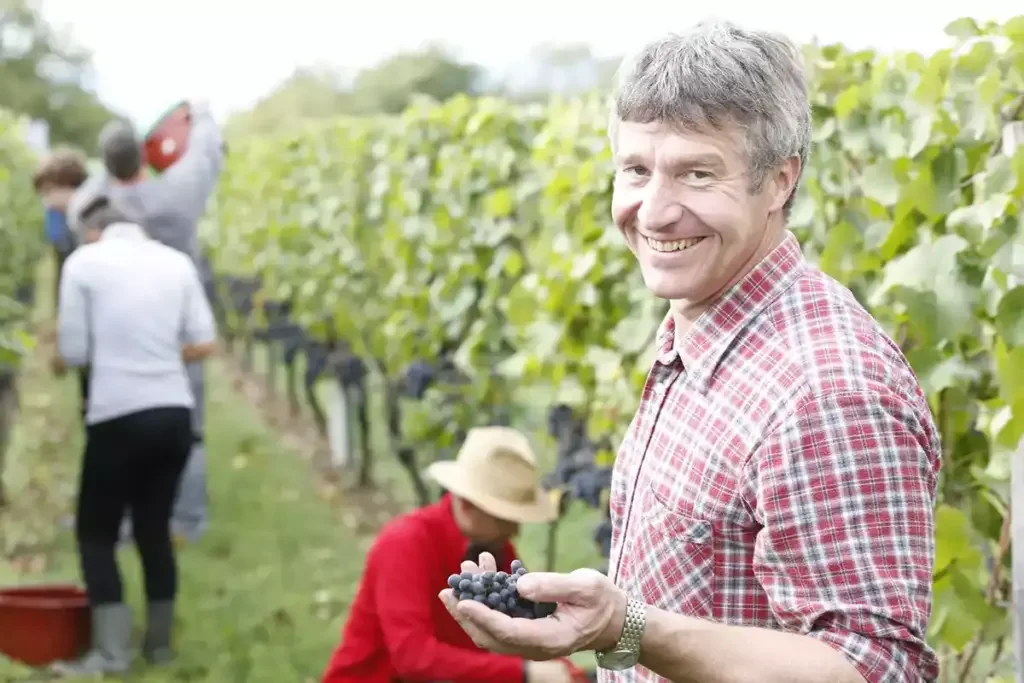
2022 Künstler Alvarinho Trocken
And yes, this is the order in which I tasted—Marcobunn GG, then this chap.
Please don’t mistake my meaning. This is the more successful wine, insofar as it does what it sets out to do, perfectly. It’s not just everything it should be; it is everything it could be. It is a delightful glass of wine and all you want to do is drink it. A bit less fruity and a bit more “wooly” than the deliriously addictive 2020, it challenges the idea that a “modest” wine can never be equivalent to a “great” wine (or a wine with affectations of greatness), and when it meets that challenge—easily—it confers a dignity for which these so-called simple wines have always had to struggle to attain. It may not be “dignified” to be able to smell this three feet from the glass—but it’s fun.
This could seem like I’m slamming the Marcobrunn, or even the entire genre of the grands crus, but reader, you know better. The Marcobrunn is profound, I admire it justly, it is a different order of being, one I respect because I believe in the elite. I run the risk of annoying my friend Gunter—who will see these words—but I need to ask: How do we compare a Significant Wine that might have been better, to an Everyday Wine that’s as good as it could possibly be? (Yup, it’s an essay question, and yup, there will be a quiz.)
This wine is highly herbal, less overtly “mineral” than the original Galician, more clement you could say. If it calls to mind a Weinviertel DAC, I won’t take issue. There’s a lot to be said for a wine that just works, and a lot of ways to say it.
2022 Sauvignon Blanc “Kalkstein” Trocken +
From the Hochheim site Herrnberg, a rare outcrop of limestone in this area. The wine is ripe (13.5% alc) but the fragrance is subtle and fine. (An aside; the ’21, which I found objectionably vegetal, sold faster than any previous vintage ex-cellar at the estate. Shows what a hot shot I am.)
Regardless, I really like this wine, because it is more a question of soil than of variety. (He also has a Chardonnay from this land, which I now wish he had included.) I never really warmed to (what I call) some of the stinky Sancerres, but I always liked (what I call) the polite Pouilly Fumés. This wine is bold, but not at all vulgar. Considering its ripeness, it acts like certain Alto-Adige Sauv-Blancs that taste fulfilled but not gross, and not overripe. Still, I don’t think I’d glug this wine—13.5% is no small business—but I really appreciate how carefully the cassis notes are expressed, almost as though it were a rather deliberate Scheurebe, and to my way of thinking, this wine is no less aristocratic than any of the Rieslings. Their ceiling is much higher, obviously, but a very smart vintner made this wine, and lavished his very smart attention on even this wine …
… and as it swells and billows in the glass, it grows more generously expressive yet it never loses its essential and detailed finesse. “Finesse” and Sauvignon Blanc do not always ride in the same car, so this is no trivial thing. It is a lovely and valuable coda to the great declamations of the Rieslings. I was stirred by this “modest” wine, even moved, sometimes amazed, and which now eases me out back into the world with a lovely anecdote, not weighty but engaging, and I want to share it.

